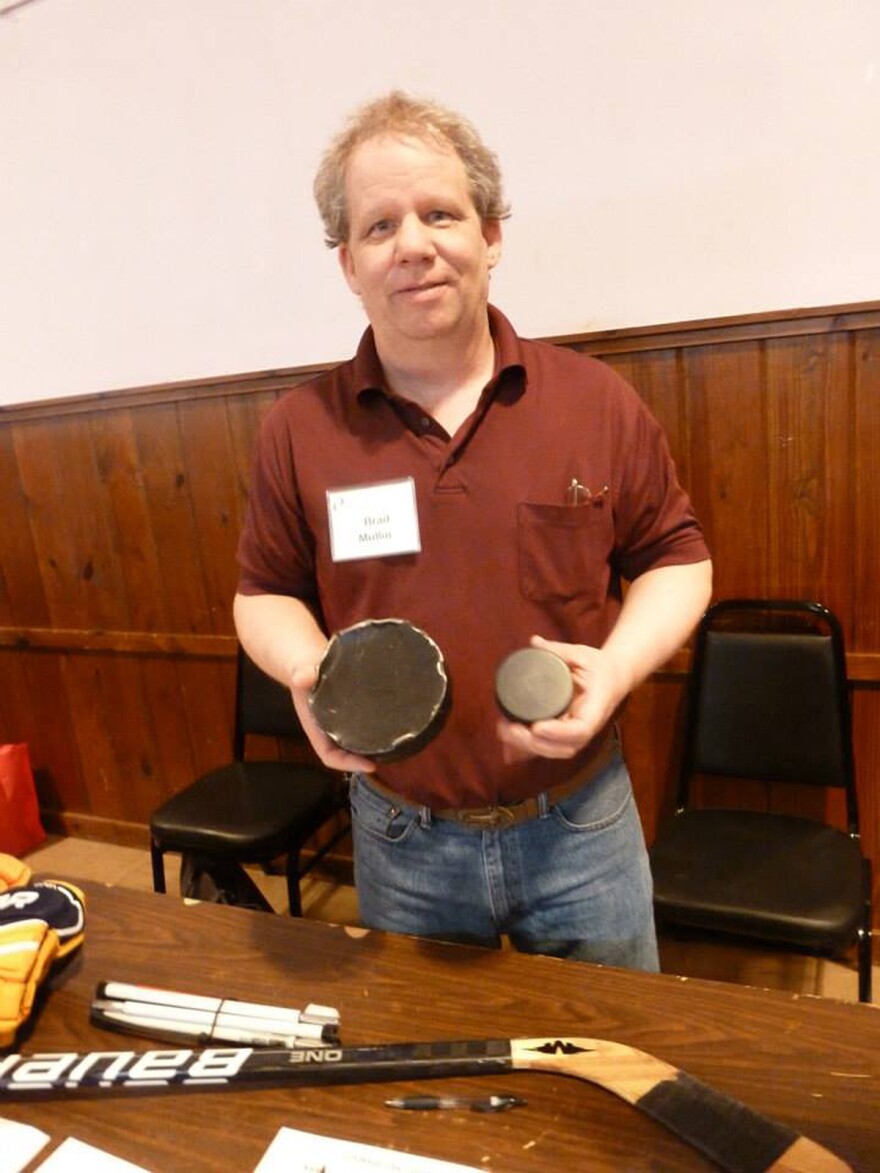If you are blind or visually impaired, at least 14 years old and want to join a hockey team, we've got some news for you! The Vermont Association for the Blind and Visually Impaired is helping to recruit a team of Vermonters and New Yorkers for a league run by Courage USA.
The Vermont Association for the Blind and Visually Impaired says blind hockey rules are essentially the same as traditional ice hockey except there is no checking and Courage USA athletes play with an adaptive puck. The puck is larger than a standard hockey puck, made of metal and filled with ball bearings. The result is a slower-moving puck that players can hear traveling down the ice.
Players’ vision levels range from legally blind (approximately 10% vision or less) to totally blind, with the lowest vision athletes playing defense or goal. The game is played with standard International Ice Hockey Federation safety protocols including no-touch icing and crease violations to ensure player safety. All players must wear full protective gear including face masks.
According to Courage USA, rules unique to blind hockey include:
- Face-offs begin with the puck on the ice and the players may only touch it on the referee’s whistle – this makes it a competition of reaction time and does not favor the player with the most vision.
- Goals may only be scored in the bottom 3 feet of the net – the adapted Blind Hockey puck does not currently make noise in the air so it is unfair to the goalie to score in the top of the net.
- Teams must complete one pass prior to being able to score in the attacking half (after the center-ice red line) of the rink – this provides both the low vision defense and the goalie an extra opportunity to track the puck.
Blind Hockey is relatively new in the United States, although it has existed in various forms across Canada for over 40 years. According to Courage USA the first blind hockey team was the Toronto Ice Owls, founded in 1972. Since then the sport has been played in other Canadian cities from Montreal to Vancouver.
Blind hockey was first played on U.S. ice in 2013 with the formation of the New York Nightshades playing in Newburgh. Shortly after, a second New York team was developed in Utica.
Courage USA states on its website: "As word continues to spread about this exhilarating new sport, we hope to facilitate the development of teams across the country, providing numerous Americans with all of the social, mental, emotional and physical health benefits of belonging to a hockey team."
Interested athletes should contact Brad Mullin, of Courage USA. Players wanting to give it a try can attend a practice before making a commitment. Vermont Association for the Blind and Visually impaired says donated equipment is available for potential players to borrow, thanks to the generosity of local teams.





